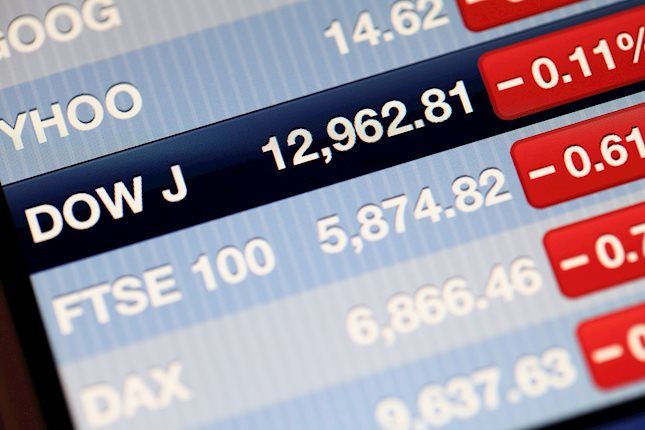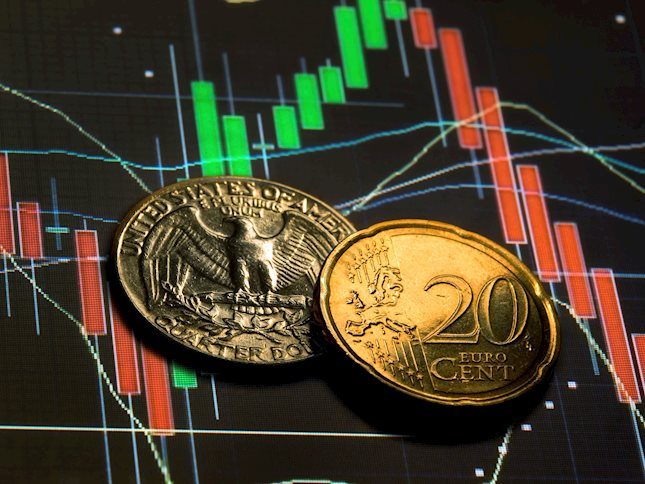Forex Today: US Dollar stays under pressure following post-CPI selloff
Here is what you need to know on Thursday, May 16:
The US Dollar (USD) is struggling to stage a rebound after suffering large losses against its major rivals following the April inflation data from the US on Wednesday. Later in the day, weekly Initial Jobless Claims, April housing, Industrial Production data and Philadelphia Fed Manufacturing Survey will be featured in the US economic docket. Investors will continue to pay close attention to comments from major central banks' policymakers as well.
The US Bureau of Labor Statistics (BLS) reported on Wednesday that the Consumer Price Index (CPI) rose 3.4% on a yearly basis in April. The annual core CPI increased 3.6% in the same period and both of these figures came in line with market expectations. The benchmark 10-year US Treasury bond yield declined more than 2% as the probability of the Federal Reserve (Fed) leaving the policy rate unchanged in September declined toward 25% from 35% before the inflation data release. In turn, the USD Index fell 0.7% and touched its lowest level since April 10. Early Thursday, the USD Index stays flat on the day below 104.50, while the 10-year US yield continues to edge lower toward 4.3%. In the meantime, US stock index futures trade modestly higher after Wall Street's main indexes rose about 1% on Wednesday.
US Dollar PRICE This week
The table below shows the percentage change of US Dollar (USD) against listed major currencies this week. US Dollar was the weakest against the New Zealand Dollar.
| USD | EUR | GBP | JPY | CAD | AUD | NZD | CHF | |
|---|---|---|---|---|---|---|---|---|
| USD | -0.98% | -1.21% | -1.00% | -0.38% | -1.12% | -1.51% | -0.56% | |
| EUR | 0.98% | -0.28% | -0.03% | 0.58% | -0.17% | -0.55% | 0.39% | |
| GBP | 1.21% | 0.28% | 0.18% | 0.86% | 0.11% | -0.27% | 0.67% | |
| JPY | 1.00% | 0.03% | -0.18% | 0.61% | -0.09% | -0.57% | 0.47% | |
| CAD | 0.38% | -0.58% | -0.86% | -0.61% | -0.71% | -1.14% | -0.28% | |
| AUD | 1.12% | 0.17% | -0.11% | 0.09% | 0.71% | -0.49% | 0.55% | |
| NZD | 1.51% | 0.55% | 0.27% | 0.57% | 1.14% | 0.49% | 0.95% | |
| CHF | 0.56% | -0.39% | -0.67% | -0.47% | 0.28% | -0.55% | -0.95% |
The heat map shows percentage changes of major currencies against each other. The base currency is picked from the left column, while the quote currency is picked from the top row. For example, if you pick the US Dollar from the left column and move along the horizontal line to the Japanese Yen, the percentage change displayed in the box will represent USD (base)/JPY (quote).
During the Asian trading hours, the data from Australia showed that the Unemployment Rate rose to 4.1% in April from 3.9% in March. In this period, Full-Time Employment declined 6.1K while Part-Time Employment increased 44.6K. After reaching its highest level since January above 0.6700, AUD/USD turned south and fell toward 0.6670 after the labor market data.
Australia’s Unemployment Rate rises to 4.1% in April vs. 3.9 % expected.
Japan's Gross Domestic Product (GDP) contracted at an annual rate of 2% in the first quarter, Japan’s Cabinet Office's preliminary estimate showed early Thursday. This print came in weaker than the market expectation for a contraction of 1.5%. After falling nearly 1% on Wednesday, USD/JPY ignored the GDP data and extended its slide. At the time of press, the pair was down 0.5% on the day at 154.15.
Japan's Shindo: The economy is expected to continue a moderate recovery.
GBP/USD broke above 1.2600 and gained 0.75% on Wednesday. After testing 1.2700 in the Asian session, the pair staged a correction and was last seen trading flat on the day near 1.2680.
EUR/USD gained 0.6% on Wednesday and closed the third consecutive day in positive territory. Early Thursday, the pair stays in a consolidation phase slightly below 1.0900.
Gold benefited from falling US T-bond yields and advanced to its highest level in three weeks near $2,400 before retreating slightly. In the European morning, XAU/USD holds steady near $2,390.
Gold price gathers strength as US CPI inflation fuels Fed rate cuts.
Inflation FAQs
Inflation measures the rise in the price of a representative basket of goods and services. Headline inflation is usually expressed as a percentage change on a month-on-month (MoM) and year-on-year (YoY) basis. Core inflation excludes more volatile elements such as food and fuel which can fluctuate because of geopolitical and seasonal factors. Core inflation is the figure economists focus on and is the level targeted by central banks, which are mandated to keep inflation at a manageable level, usually around 2%.
The Consumer Price Index (CPI) measures the change in prices of a basket of goods and services over a period of time. It is usually expressed as a percentage change on a month-on-month (MoM) and year-on-year (YoY) basis. Core CPI is the figure targeted by central banks as it excludes volatile food and fuel inputs. When Core CPI rises above 2% it usually results in higher interest rates and vice versa when it falls below 2%. Since higher interest rates are positive for a currency, higher inflation usually results in a stronger currency. The opposite is true when inflation falls.
Although it may seem counter-intuitive, high inflation in a country pushes up the value of its currency and vice versa for lower inflation. This is because the central bank will normally raise interest rates to combat the higher inflation, which attract more global capital inflows from investors looking for a lucrative place to park their money.
Formerly, Gold was the asset investors turned to in times of high inflation because it preserved its value, and whilst investors will often still buy Gold for its safe-haven properties in times of extreme market turmoil, this is not the case most of the time. This is because when inflation is high, central banks will put up interest rates to combat it. Higher interest rates are negative for Gold because they increase the opportunity-cost of holding Gold vis-a-vis an interest-bearing asset or placing the money in a cash deposit account. On the flipside, lower inflation tends to be positive for Gold as it brings interest rates down, making the bright metal a more viable investment alternative.
Forex News
Keep up with the financial markets, know what's happening and what is affecting the markets with our latest market updates. Analyze market movers, trends and build your trading strategies accordingly.
























